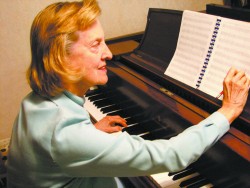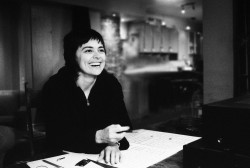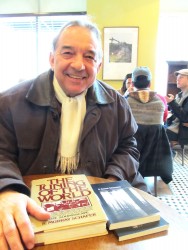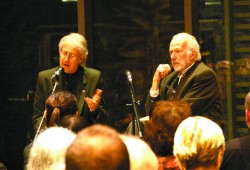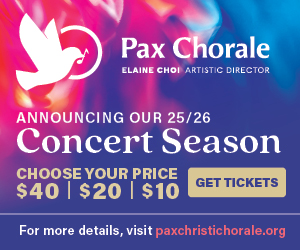Reflections on Time
 Reflecting on the nature of time and how we ultimately have no choice but to surrender to its rhythms is an activity that eternally captures the human imagination. One of the great gifts of Japanese culture to our understanding of time is found in the principle of Wabi-sabi, which finds beauty in the imperfect, impermanent and incomplete. Things in a state of transience, of coming and going — such as a flower coming into bloom or decaying — demonstrate this ideal. Wabi-sabi honours the process of change and those effects that the passage of time creates. Awareness at this level requires a quiet mind and cultivated human behaviour, which, in the Japanese worldview, can be instilled through the appreciation and practice of the arts.
Reflecting on the nature of time and how we ultimately have no choice but to surrender to its rhythms is an activity that eternally captures the human imagination. One of the great gifts of Japanese culture to our understanding of time is found in the principle of Wabi-sabi, which finds beauty in the imperfect, impermanent and incomplete. Things in a state of transience, of coming and going — such as a flower coming into bloom or decaying — demonstrate this ideal. Wabi-sabi honours the process of change and those effects that the passage of time creates. Awareness at this level requires a quiet mind and cultivated human behaviour, which, in the Japanese worldview, can be instilled through the appreciation and practice of the arts.
Since January of 2013, the city of Toronto has been enjoying Spotlight Japan, a four-month, city-wide, multidisciplinary celebration of classic and contemporary Japanese culture in theatre, dance, film, visual arts and of course, music. On March 5 at Koerner Hall, Soundstreams will be presenting their contribution to this “spotlight” in their concert “Fujii Percussion and Voices.” Since the act of listening to music offers a very refined way of experiencing movement through time, this concert will present an opportunity to be transported into a deeper engagement with these ideals of transience and impermanence.
The concert features the virtuosic Fujii Trio from Japan performing on five-octave marimbas, vibraphone, glockenspiel and a variety of other percussion instruments along with Canadian performers Ryan Scott on percussion, Gregory Oh on piano and the Toronto Children’s Chorus. Because writing for percussion instruments is central to the work of many Japanese composers, this concert offers an extraordinary opportunity to experience the subtle workings of instrumental colour by four of that country’s outstanding composers: Tōru Takemitsu, Akira Miyoshi, Maki Ishii and Yasuo Sueyoshi. The concert will include the Canadian premiere of Miyoshi’s Yamagara Diary featuring the Toronto Children’s Chorus and a rare instrument called the sanukite, as well as a newly commissioned work from Canadian Michael Oesterle.
The sanukite is a uniquely Japanese instrument made from black volcanic stones that originate from the Kagawa Prefecture area. Known locally as kankanishi or “cling-clang rocks,” they produce a unique ethereal tone when struck, which, in the words of Japanese drummer Masashi Tomikawa “reveal the spirit of time itself.”
Oesterle’s piece Carrousel references the spiral motion of time and is scored as a quartet for glockenspiel, vibraphone, marimba and piano. The three percussion instruments will surround the piano and function as a way of preparing the piano as they reflect back the piano’s gestures, creating a type of “blurred vision.” This is similar to how “as we pivot around the sun, all bodies acquire a natural rhythm or pulse, tuned to the return of sunshine and darkness, becoming captives of a solar carrousel.” The other Canadian work is Claude Vivier’s Pulau Dewata (Island of the Gods) for percussion ensemble of varying instrumentation dedicated to the people of Bali.
The ending of a legacy: In spite of the virtue of embracing impermanence, it is still an unfortunate turn of events that the immensely successful series run by the Canadian Music Centre — New Music in New Places — will be coming to an end. This nation-wide series has forever changed the landscape of how contemporary music is perceived and received in this country, and even though it is being terminated due to federal funding changes, it’s absolutely essential that this innovation of placing new music listening experiences within community venues be taken up in different ways in the future. This month offers three opportunities in southern Ontario to experience music in the places where people gather — from eateries, to breweries, to retail stores.
The first such event will happen March 1 at the Academy of Lions General Store featuring the Music in the Barns Chamber Ensemble performing works by Richard Reed Parry, Rose Bolton and Scott Godin. The venue is part café, part gallery and part fitness store. Post-concert events include a performance by baroque folk duo Tasseomancy, and a chance to party with DJ Adam Terejko.
Not in our concert listings but of interest, Guelph and Kitchener-Waterloo residents can visit the Happy Traveller Bistro, 40 Garden St., Guelph, 519-265-0844, on March 8 to hear performances by the Kitchener-Waterloo Guelph New Music Collective. The Bistro offers a welcoming environment for local artists, musicians and community projects while serving up vegetarian and vegan food.
And on March 21 and 22 it’s off to the recently opened Junction Craft Brewery tap room and retail store for “Junction the Dry,” to hear music by Derek Johnson, Emilie LeBel, James Rolfe, Caitlin Smith and Healey Willan.
As these events demonstrate, New Music in New Places has made the experience part of our evolving consciousness.
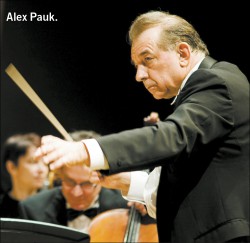 The emerging collectives: There’s much talk these days about “emerging artists.” It’s become a buzz phrase and even the arts councils have categories for such creatures. But beyond the labels, one characteristic I’m noticing amongst younger composers and musicians is the movement towards the creation of collectives. Not that this is necessarily a new strategy, but it’s a healthy sign of creating space not only for new voices and artistic visions, but also for new ways of collaborating. This form of partnership is another reflection of changes in the creative process that I spoke of in February’s column in the context of the upcoming New Creations Festival running March 2 to 9. More about that festival below, but first, here’s a look at opportunities to see what’s happening in three of these local collectives.
The emerging collectives: There’s much talk these days about “emerging artists.” It’s become a buzz phrase and even the arts councils have categories for such creatures. But beyond the labels, one characteristic I’m noticing amongst younger composers and musicians is the movement towards the creation of collectives. Not that this is necessarily a new strategy, but it’s a healthy sign of creating space not only for new voices and artistic visions, but also for new ways of collaborating. This form of partnership is another reflection of changes in the creative process that I spoke of in February’s column in the context of the upcoming New Creations Festival running March 2 to 9. More about that festival below, but first, here’s a look at opportunities to see what’s happening in three of these local collectives.
The Thin Edge New Music Collective is inspired by how new music can impact contemporary life. Their March 13 concert at the Canadian Music Centre will feature works using innovative instrumentation: melodica, thumb piano, toy piano, autoharp and auxiliary instruments alongside violin, piano and cello.
The second collective is Vox Novus that gathers together composers, musicians and music enthusiasts. In their March 10event at the Al Green Theatre, they will be presenting electroacoustic compositions from 60 Canadian composers with 60 one-minute dance works.
The Spectrum Music collective is a group of jazz-trained musicians and young contemporary classical composers. Their upcoming concert “What Is Toronto?” on April 5 will focus on intimate snapshots of the history, languages, people and places of the city. The concert will include a panel discussion on the subject of Toronto’s identity and history featuring local writers, politicians and thinkers.
Words and music: In their concert entitled “Time & Tide” on March 5 and 6, the Talisker Players will perform compositions by Canadians Walter Buczynski and Scott Good alongside readings of texts from various English authors. At Gallery 345 on March 14, the words of poets Roger Greenwald, Sheniz Janmohamed and Jacob Scheier will provide inspiration for the musical improvisations of Kousha Nakhaei on violin and Casey Sokol on piano.
Music in story is as old as humanity itself. At the Toronto Storytelling Festival, which runs from March 16 to 24, a composition I wrote eight years ago, The Handless Maiden, for soprano, storyteller, vocalizations and electroacoustics will be performed March 24. Another storytelling-focused concert will be happening at Kingston Road United Church on March 24. “The Storied Harp” will feature works by Marjan Mozetich (Songs of the Nymph) and Murray Schafer (The Crown of Ariadne).
Celebrating anniversaries: Since anniversaries are a way of marking time, there are a few important ones to note this month. Esprit Orchestra is presenting their 30th anniversary season finale concert March 28 with two newly commissioned works by Torontonian Erik Ross and Montrealer Denis Gougeon. These new works will serve to bring attention to Esprit’s ongoing tradition of presenting and commissioning Canadian music.As a special audience treat, the orchestra will also be presenting repeat performances of two audience favourites: Purple Haze and the theme from The Twilight Zone.
Two unique events complete the anniversary motif. Six different composers, all born in 1912/13, will be toasted in a fundraiser for New Music Concerts at Gallery 345 on April 6 to honour their 100th birthdays. Included are small works by Weinzweig, Pentland, Cage, Nancarrow, Brant and Lutoslawski. And to further celebrate the legendary Weinzweig, Soundstreams will be presenting a concert of his works March 11 at Walter Hall, followed by the unveiling of a plaque to be placed at Weinzweig’s family home.
The New Creations Festival: As mentioned above, I wrote at length about the Toronto Symphony’s New Creations Festival in February’s issue of The WholeNote, so I won’t repeat myself here, other than to say don’t miss out on this, and in particular the premiere on March 9of A Toronto Symphony: Concerto for Composer and City. The two other concerts in the festival are on March 2 and 7. Given that the Spectrum collective is also featuring Toronto’s sounds and places in their April 5 concert, our ears should be primed for engaging in new ways with the place in which we live. Who knows where this might lead as a follow-up to the ending of the New Music in New Places series?
Additional quick picks
Music Toronto. Discovery Series: Trio Fibonacci. Works by Radford, Onslow and Sokolović. Jane Mallett Theatre, St. Lawrence Centre for the Arts, March 14.
Toy Piano Composers. Threshold/Le Seuil. Works by Pearce, Thornborrow, Denburg, Tam, Correia and Ryan. Artword Artbar, Hamilton, March 21. Repeat performance March 23 in Toronto at the Heliconian Hall.
Canadian Sinfonietta. A Visit from Lviv. Works by Vasks, Paderewski, Royer, Pepa and Laniuk. Glenn Gould Studio, March 23.
Diana McIntosh. In Concert. Featuring a retrospective of works composed and performed by McIntosh. Heliconian Hall, April 4.
Wendalyn Bartley is a Toronto-based composer and electro-vocal sound artist. She can be contacted at sounddreaming@gmail.com.





